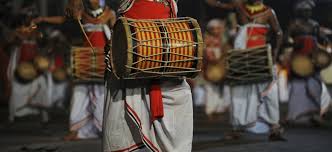In Grade 3, my Social Studies textbook described Sri Lanka as being a multicultural country, where people of all ethnicities lived together in harmony. What is ironic, and what my eight-year-old self didn’t realise, is that this was what I was being taught while the country was in an ethnic civil war.
Fast-forward seven years to Grade 10, when I was learning about the history of the country for O/Levels. In the first chapter, we learn that all the information about the country we have is from the Mahavamsa, inscriptions, tablets and ruins. All found in the different historical capitals of the country.
The Ordinary Level history syllabus taught to students in Grade 10 and 11 is mostly based on the Mahavamsa, which chronicles the history from 4 Century BC, with the information gathered by Buddhist monks. While this source provides us with a wealth of information, which must be taken in to account, relying heavily on it does not show the accurate picture of the country and its people as a whole.
Since around 4 BC, Sri Lanka has been inhabited by the Sinhala ethnic group originating from the Aryans of North India, and the Tamil ethnic group, originating from the Dravidians of South India. The Jaffna Peninsula in the north has, for the most part, been ruled by the latter group, while the rest of the kingdoms in the country, including the capital kingdoms were ruled by the Sinhala people. The differences in race did not stop these people from coexisting for centuries, and their ability to peacefully prosper must be understood and appreciated.
As the Mahavamsa only details the history of the capital kingdoms, which were invariably Sinhala-Buddhist, the Sri Lankan history that is taught to children is extremely Sinhala-centric, with only a few paragraphs mentioning the Jaffna Kingdom and the Tamil people.
By failing to holistically explain the history of the Tamil people of this country, who have always lived here, the curriculum allows for a vacuum in knowledge. This lack of understanding that the island is as much Tamil as it is Sinhala gives way to a dangerous narrative—that it is the Sinhalese who rightfully exist in the land and the Tamils and Muslims are outsiders, who migrated later on.
This false narrative is further allowed to propagate by the fact that after Grade 5, the syllabus rarely mentions the indigenous Vedda people, who have lived on the island long before the migrants from both the South and North of India arrived on its shores.
Despite the fact that a small Vedda community still exists in Mahiyanganaya today, nationalists seem to overlook them, and determine the Sinhalese to be the original people of the country. This is far from the truth. Unfortunately, but predictably, this narrative is exploited by people with self-interest to further their political and other ambitions, creating conflict.
The manner in which these ethnocentric narratives are exploited by people for their own gain could be lessened a great deal if children from a young age were taught more deeply and cohesively about the real ethnic history comprising of all ethnicities of the country.
Briefly mentioning other ethnic groups, while solely focusing on the history of one group is by no means a conclusive or comprehensive history of a country that is promoted in other subjects as being “peacefully multi-ethnic”.
This phenomenon is not unique to Sri Lanka, as textbooks of many countries have whitewashed versions of history in some form or another, such as African American or Native American history in the US – but that does not mean we should not strive to change it.
The reduction of ethnocentric sentiments is not the only benefit that could come from reforming the history syllabus. As the country pushes for reconciliation and peace building, one of the most sustainable ways to achieve these goals can be through reforming the history syllabus.
How? It’s very simple really. The lack of representation and acknowledgment of the minority groups has been an issue since the 1970s. It could be argued that this trend is still continuing today. By reforming the history syllabus, and allowing all children to learn about the history of all ethnicities within the mainstream education system can be greatly beneficial.
Currently thousands of Tamil children across the island are studying for and passing a history exam that does not give them representation. They learn about one part of the history of the country extensively, while their own is limited to a few pages at best. Similarly, there are thousands of children studying and passing a history exam without being taught much about the history of their neighbours who are of a different ethnicity.
If the history of the Sinhala and Tamil people are tied together, and taught positively, about how for centuries before colonialism, the people lived in harmony, we can ensure that understanding and a feeling of national pride and inclusion is felt by all people.
By formally accepting, acknowledging and teaching that this whole country belongs to everyone and has been this way for centuries, we will allow for an organic, long-lasting, sustainable unity.
Courtesy: Daily FT


